Potrebujeme váš súhlas na využitie jednotlivých dát, aby sa vám okrem iného mohli ukazovať informácie týkajúce sa vašich záujmov. Súhlas udelíte kliknutím na tlačidlo „OK“.
ASTM D6066-11
Standard Practice for Determining the Normalized Penetration Resistance of Sands for Evaluation of Liquefaction Potential (Withdrawn 2020)
Automaticky preložený názov:
Štandardné praktiky pre stanovenie normalizovanú odolávať prieniku Sands pre hodnotenie skvapalňovanie potenciálu
NORMA vydaná dňa 1.12.2011
Informácie o norme:
Označenie normy: ASTM D6066-11
Poznámka: NEPLATNÁ
Dátum vydania normy: 1.12.2011
Kód tovaru: NS-33624
Počet strán: 16
Približná hmotnosť: 48 g (0.11 libier)
Krajina: Americká technická norma
Kategória: Technické normy ASTM
Kategórie - podobné normy:
Anotácia textu normy ASTM D6066-11 :
Keywords:
earthquakes, liquefaction, penetration resistance, standard penetration test , Engineering criteria/design--soil/rock/related materials, Hammers, Liquefaction, Normalized penetration resistance, Penetration resistance, Sand, SPT (standard penetration test), ICS Number Code 13.080.99 (Other standards related to soil quality)
Doplňujúce informácie
| Significance and Use | ||||||||||||||||||
|
Normalization of penetration resistance data is a frequently used method to evaluate the liquefaction susceptibility of sands. A large case history database from many countries has been accumulated to estimate instability of saturated sands during earthquakes (1,2,3,4). This test is used extensively for a great variety of geotechnical exploration programs where earthquake induced instability of soil needs to be evaluated. Many widely published correlations and local correlations are available, which relate penetration resistance to the engineering properties of soils and the behavior of earthworks and foundations. The data from different countries with differing drilling techniques have been interpreted to develop a preferred normalization approach. This approach has been termed the N1 method proposed by H. Bolton Seed and his colleagues (2,3). Evaluation of liquefaction potential is beyond the scope of this practice. Interpretation of normalized penetration resistance values should be performed by qualified personnel familiar with the multitude of factors influencing interpretation of the data. One purpose of this practice is to attempt to develop a more accurate data base of penetration resistance data from future liquefaction case histories. The normalized penetration resistance determined in this practice may be useful for determination of other engineering properties of sands. This practice is based on field studies of limited depth and chamber testing of limited stress conditions (1,2,5,6). The existing data bases also are limited in soil types examined. Drilling equipment and methods vary widely from country to country. The majority of data is obtained using the fluid rotary method of drilling with small drill rods and donut or safety type hammers. Some studies have shown that other drilling methods, such as hollow stem augers can be used to successfully collect penetration resistance data (7,8). When using alternate drilling methods, however, it is easier to cause disturbance, and potential disturbance must be evaluated carefully. If there is any question regarding disturbance from alternative drilling methods, use of fluid rotary drilling is recommended. A majority of case history liquefaction data has been collected at shallow depths of less than 50 ft. Stress correction information is limited to 3 to 6 ton/ft2 (3000 to 6000 kPa) range. Knowledge is limited for energy transmission effects with drill rod lengths exceeding 100 to 150 ft (30 to 45 m). This practice is limited to evaluation of level ground sites. For soils subjected to non-level ground conditions, other correction factors may be required (3). Note 2—The reliability of data and interpretations generated by this practice is dependent on the competence of the personnel performing it and the suitability of the equipment and facilities used. Agencies that meet the criteria of Practice D3740 generally are considered capable of competent testing. Users of this practice are cautioned that compliance with Practice D3740 does not assure reliable testing. Reliable testing depends on several factors and Practice D3740 provides a means of evaluating some of these factors. This practice is dependent on existing data and the currently accepted practice for measurement of drill rod energy ratio, ERi, Test Method D4633 and of the penetration resistance test, Test Method D1586. The current practice consists of adjusting raw N values to a drill rod energy ratio of 60 % (2). Recommended practice stresses measurement of the drill rod energy ratio because there often are losses in the impact anvil. This measurement is performed by instrumenting drill rods at the surface. Energy should be obtained by using both force and acceleration measurements for integration of the product of force and velocity. For many automatic hammer systems, once the drill rod energy ratio is known for the particular design, periodic monitoring of hammer terminal impact velocity (kinetic energy), or drop height (potential energy), may be required to assure proper hammer operation. Most manufacturers can supply energy transmission data for automatic hammers. Kinetic energy or potential energy checks do not provide drill rod energy, ERi, because of losses through the anvil, but they can provide a useful check that the hammer is operating correctly. Velocity checks or drop height checks can be performed using radar or tape extensometers, respectively. Method A—Depends on assumed drill rod energies for hammer systems such as the safety and automatic hammer systems commonly used in North America and other countries (2,10,11). Assumed energy ratios for other hammer systems should be based on previously published measurements. The assumed values should be documented and source data referenced. The hammer system should be operated in the same method as when the documented energy data was collected. Method B—Depends on performance of energy measurements for the system during testing. These measurements may be performed using Test Method D4633 or other methods, such as force-acceleration measurements. The measurement methods, configurations, calibrations, and computations should be documented or reported. It is possible to adjust hammer weight and drop height of the hammer system in place of performing the energy correction. If these adjustments are made, the developed methodology and supporting energy measurements should be reported. The correction of N60 to a reference stress level is based on a stress correction factor, CN. A typical stress exponent, n, used in practice, ranges from 0.45 to 0.6 (6,16). The stress adjustment factor was developed using chamber testing of clean sands. The adjustments depend on particle size, density, over consolidation and aging (5,17). Frequently, the soils of concern are young alluvial sand deposits of low density. These factors may not be applicable to sands with fines (SM, SC) or sands with more compressible minerals (mica or calcareous). With the lack of controlled data for these soils, however, current practice is to apply these factors to these soils for preliminary evaluations of soil stability. Other methods for normalizing soil values can be used and are acceptable if the method and reasoning are documented (5,17). Soil liquefaction is most often associated with saturated sands. Most investigations will be performed below the water table. The normalization of penetration resistance also may be applicable to dry sands. In some cases, where future soil saturation is anticipated, testing can be performed in dry sands. If the testing is performed in dry sands, the user should be aware of possible changes in the soil upon saturation. This is especially true with dirty dry sands that may undergo collapse upon saturation. Dry sands are more stable during drilling such that a wider variety of drilling methods are acceptable and many of the drilling precautions in Section 11 may be waived. Use of this practice provides a disturbed soil sample for identification and for laboratory testing. The classification information commonly is used to develop site stratigraphy and to identify zones where further, more detailed investigations may be required. |
||||||||||||||||||
| 1. Scope | ||||||||||||||||||
|
1.1 This practice outlines a procedure to obtain a record of normalized resistance of sands to the penetration of a standard sampler driven by a standard energy for estimating soil liquefaction potential during earthquakes. The normalized penetration resistance determined in this practice may be useful for determination of other engineering properties of sands. 1.2 This practice uses Test Method D1586 with additions and modifications to minimize disturbance of saturated loose cohesionless sands during drilling. This practice combines results of Test Method D1586 and interprets the data for normalization purposes. 1.3 Due to inherent variability of the SPT, guidance is given on test configuration and energy adjustments. Penetration resistance is adjusted for energy delivered in the penetration test. Energy adjustments can be estimated or measured and reported. 1.4 Standard practice for normalizing penetration resistance values is given. Penetration resistance data are normalized to a standard overburden stress level. 1.5 The normalized penetration resistance data may be used to estimate liquefaction resistance of saturated sands from earthquake shaking. Evaluation of liquefaction resistance may be applied to natural ground conditions or foundations for either planned or existing structures. 1.6 Using this practice representative disturbed samples of the soil can be collected for identification purposes. 1.7 This practice is limited to use in cohesionless soils (see Test Method D2487 and classifications of SM, SW, SP, SP-SM, and SW-SM Practice D2488). In most cases, testing is performed in saturated deposits below the water table. In some cases, dry sands may be tested (see 5.4). This practice is not applicable to lithified materials or fine grained soils. Gravel can interfere with the test and result in elevated penetration resistance values. Normalization of penetration resistance values for gravelly soils is beyond the scope of this practice. 1.8 Penetration resistance measurements often will involve safety planning, administration, and documentation. This practice does not purport to address all aspects of exploration and site safety. This standard does not purport to address all of the safety concerns, if any, associated with its use. It is the responsibility of the user of this standard to establish appropriate safety and health practices and determine the applicability of regulatory limitations prior to use. Performance of the test usually involves use of a drill rig; therefore, safety requirements as outlined in applicable safety standards. For example, OSHA regulations, DCDMA safety manual, drilling safety manuals, and other applicable state and local regulations must be observed. 1.9 The values stated in inch-pound units are to be regarded as standard. Within the text, the SI units, are shown in parentheses. The values stated in each system are not equivalents, therefore, each system must be used independently of the other. 1.9.1 In pressure correction calculations, common units are ton/ft2, kg/cm2, atm, and bars. Since these units are approximately equal (within a factor of 1.1), many engineers prefer the use of these units in stress correction calculations. For those using kPa or kN/m2, 100 kPa is approximately equal to one ton/ft2. The stress exponent, n, (see 3.3.1) is approximately equal for these units. 1.10 This practice may not be applicable in some countries, states, or localities, where rules or standards may differ for applying penetration resistance to liquefaction estimates. Other practices exist for estimating soil instability from penetration resistance data. Procedures may change with advances in geotechnical engineering. It is dependent on the user in consultation with experienced engineers to select appropriate methods and correction to data. In earthquake engineering studies, many phenomena can affect soil instability. The practice reflects only one current exploration technique and method for normalizing penetration resistance data to a common level for comparisons to case history information. 1.11 This practice offers a set of instructions for performing one or more specific operations. This document cannot replace education or experience and should be used in conjunction with professional judgment. Not all aspects of this practice may be applicable in all circumstances. This ASTM standard is not intended to represent or replace the standard of care by which the adequacy of a given professional service must be judged, nor should this document be applied without consideration of a project's many unique aspects. The word “Standard” in the title of this document means only that the document has been approved through the ASTM consensus process. |
||||||||||||||||||
| 2. Referenced Documents | ||||||||||||||||||
|
Podobné normy:
Historická
1.7.2010
Historická
1.11.2011
Historická
1.7.2008
Historická
1.11.2009
Historická
1.8.2013
Historická
15.1.2013
Odporúčame:
Aktualizácia technických noriem
Chcete mať istotu, že používate len platné technické normy?
Ponúkame Vám riešenie, ktoré Vám zaistí mesačný prehľad o aktuálnosti noriem, ktoré používate.
Chcete vedieť viac informácií ? Pozrite sa na túto stránku.



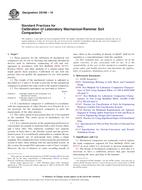 ASTM D2168-10
ASTM D2168-10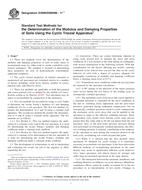 ASTM D3999/D3999M-11..
ASTM D3999/D3999M-11..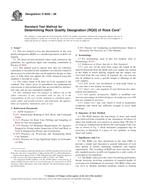 ASTM D6032-08
ASTM D6032-08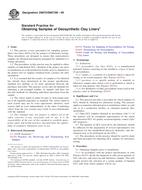 ASTM D6072/D6072M-09..
ASTM D6072/D6072M-09..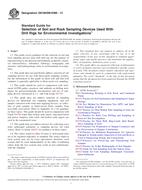 ASTM D6169/D6169M-13..
ASTM D6169/D6169M-13..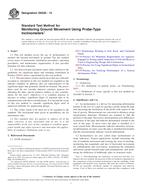 ASTM D6230-13
ASTM D6230-13
 Cookies
Cookies
